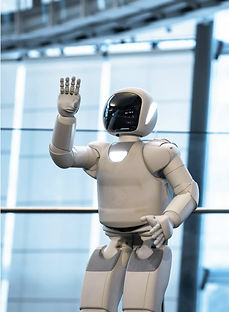3D Sensor Fusion Annotation
Our experienced teams provide precise and reliable 3D sensor fusion and point cloud data annotation services, covering voxel-perfect 3D cuboid, semantic segmentation, sensor fusion annotation, and other custom labels to meet your precise data labeling needs.

Our Expertise

Labeled datasets of all types

Selected global annotation teams

Data quality review

Years of training data experience
Proprietary Data Annotation Platform
BasicAI AI-powered data annotation platform provides advanced tools specialized for LiDAR 3D point cloud and multi-sensor data labeling. It enables our data annotators to efficiently collaborate on large-scale 3D sensor fusion annotation workflows while maintaining label quality and consistency.
AI-Powered Annotation Toolset
Auto Annotation, Segmentation and Object Tracking
Auto Ground Detection
AI-assisted Annotation
Online Calibration
Quality Assurance
Configurable QA Rules
Real-time Quality Check
Batch Quality Check
Consecutive Frames Review


Scalability
Large Project Support
Cloud Storage and Online Import / Export
Workflow & Performance Management
Roles & Priviledges Management


Use Case
The Essential for Your CV Model
3D Sensor Fusion data annotation helps ML / CV model training to interpret the data captured by cameras and 3D sensors. It involves labeling raw sensor data to provide context and meaning, which allows AI models to learn how to recognize and interpret similar data in the future.
Autonomous Driving & ADAS
Autonomous vehicles use cameras and LiDAR sensors to identify and classify objects, understand the speed and direction of other objects. This data, when combined with AI models, helps the vehicle make informed decisions about how to navigate the environment safely and efficiently. By learning from annotated data, the AI model can create a detailed 3D representation of the environment and make informed decisions about how to navigate. Learn More
Semantic segmentation of cars, bikes, pedestrians, roads, curbs, buildings, vegetation, etc., for object detection and scene segmentation.
3D bounding boxes around vehicles, people, traffic signs, etc., for object localization and tracking.
Polygons and poly-lines of drivable surfaces and lanes, for path planning and navigation.
Annotated consecutive frames showing vehicle movement over time, for motion forecasting models.
Classification of weather conditions like rain, fog, snow to improve perception in adverse environments.
Smart Cities
Smart Cities use 3D sensor fusion and LiDAR AI models to monitor and manage urban infrastructure. This can include traffic management, where the technology is used to monitor traffic flow and optimize traffic signals, or infrastructure inspection, where it's used to identify potential issues with buildings, bridges, or roads. Annotated datasets can help AI models identify specific elements of the urban landscape, such as vehicles, pedestrians, buildings, or traffic signals. This information can be used for various purposes, like traffic management or infrastructure maintenance. Learn More
Bounding boxes for pedestrians, cyclists, scooters to analyze mobility patterns.
Instance segmentation of parking spots, traffic lights, road signs, bus stops, for asset management.
Terrain labeling for accessibility features - curb ramps, crosswalks, sidewalk width.
Attribute tags like pavement type, lighting conditions, tree species for surveys.
Time-based labels to identify congestion, incidents, construction events.
Robotics
Robots use multiple sensors to navigate their surroundings, identify objects, and perform tasks. This is especially useful in environments that are hazardous or difficult for humans to operate in, such as factories, power plants, space exploration, or underwater exploration. Trained CV models can be used to help robots understand their environment and interact with it effectively. Annotated data can help train the robot's AI model to recognize these specific parts, tools, or obstacles, and determine appropriate actions.
















